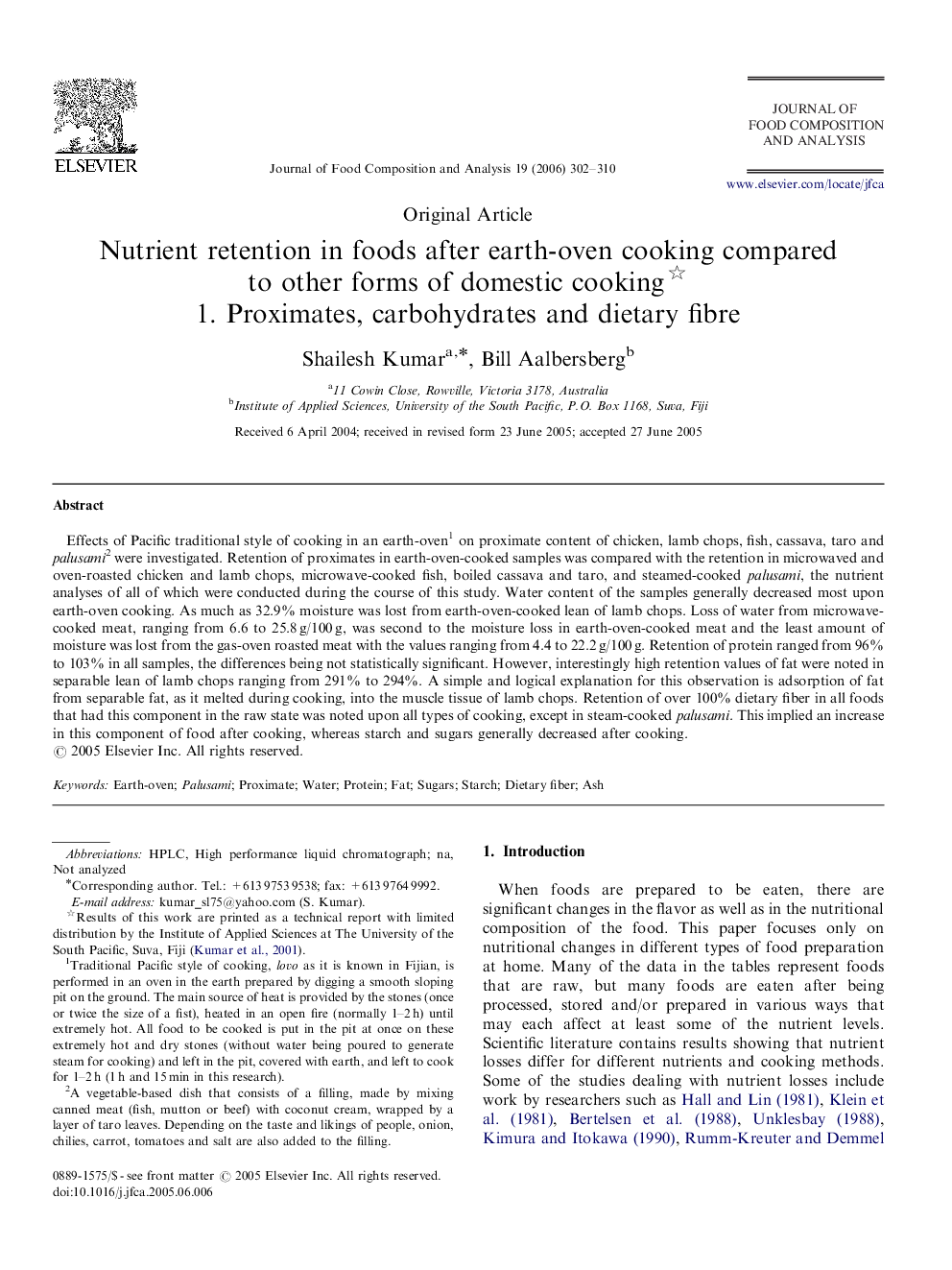| Article ID | Journal | Published Year | Pages | File Type |
|---|---|---|---|---|
| 1219323 | Journal of Food Composition and Analysis | 2006 | 9 Pages |
Effects of Pacific traditional style of cooking in an earth-oven1 on proximate content of chicken, lamb chops, fish, cassava, taro and palusami 2 were investigated. Retention of proximates in earth-oven-cooked samples was compared with the retention in microwaved and oven-roasted chicken and lamb chops, microwave-cooked fish, boiled cassava and taro, and steamed-cooked palusami, the nutrient analyses of all of which were conducted during the course of this study. Water content of the samples generally decreased most upon earth-oven cooking. As much as 32.9% moisture was lost from earth-oven-cooked lean of lamb chops. Loss of water from microwave-cooked meat, ranging from 6.6 to 25.8 g/100 g, was second to the moisture loss in earth-oven-cooked meat and the least amount of moisture was lost from the gas-oven roasted meat with the values ranging from 4.4 to 22.2 g/100 g. Retention of protein ranged from 96% to 103% in all samples, the differences being not statistically significant. However, interestingly high retention values of fat were noted in separable lean of lamb chops ranging from 291% to 294%. A simple and logical explanation for this observation is adsorption of fat from separable fat, as it melted during cooking, into the muscle tissue of lamb chops. Retention of over 100% dietary fiber in all foods that had this component in the raw state was noted upon all types of cooking, except in steam-cooked palusami. This implied an increase in this component of food after cooking, whereas starch and sugars generally decreased after cooking.
